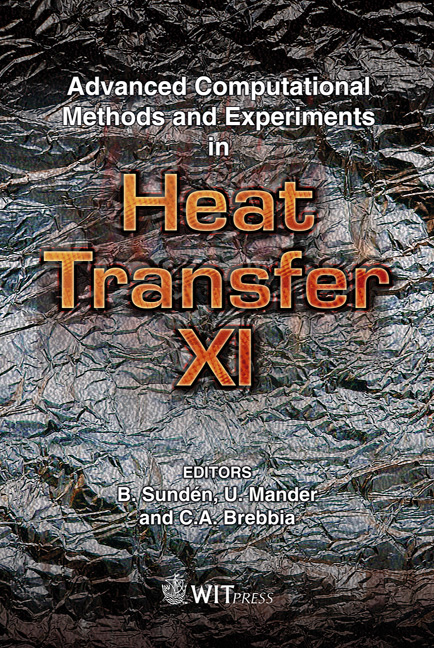Experimental And Numerical Investigation Of Real World Dimpled Heat Exchanger
Price
Free (open access)
Transaction
Volume
68
Pages
12
Page Range
23 - 34
Published
2010
Size
4,273 kb
Paper DOI
10.2495/HT100031
Copyright
WIT Press
Author(s)
S. Preibisch & M. H. Buschmann
Abstract
This study is motivated by the observation that recent investigations of dimpled surfaces rarely go beyond single plates or channels. Here, we explore a real world cross flow heat exchanger (400400100 mm³). It is found that in any dimpled configuration the exchanged heat is larger than in the reference case (smooth walls). The enhancement of the specific heat transfer per unit area can exceed 40%. Reasonable agreement of global parameters with numerical simulations (FLUENT) is obtained when the whole heat exchanger considering each individual structure is modelled. Based on that finding we analyse the numerical results in order to obtain information on local flow situation and in order to find physical explanations for the different enhancement found in different geometrical configurations. Keywords: heat exchangers, dimples, experiment, numerical simulation. 1 Introduction Heat exchangers play a central role in process engineering, air conditioning heating and many other technical applications. Analysing the international literature, we see great progress being made in developing new and advanced technologies to improve traditional heat exchangers like cross- and counter-flow heat exchangers (see e.g. Gad-el-Hak [1]). However, the majority of these investigations are restricted to rather less academic subjects. In reality, a heat exchanger is much more complex than the often examined single plates and passages. In this study we look at a complete cross-flow heat exchanger. Our general strategy is to combine experimental investigations of global parameters like
Keywords
heat exchangers, dimples, experiment, numerical simulation





